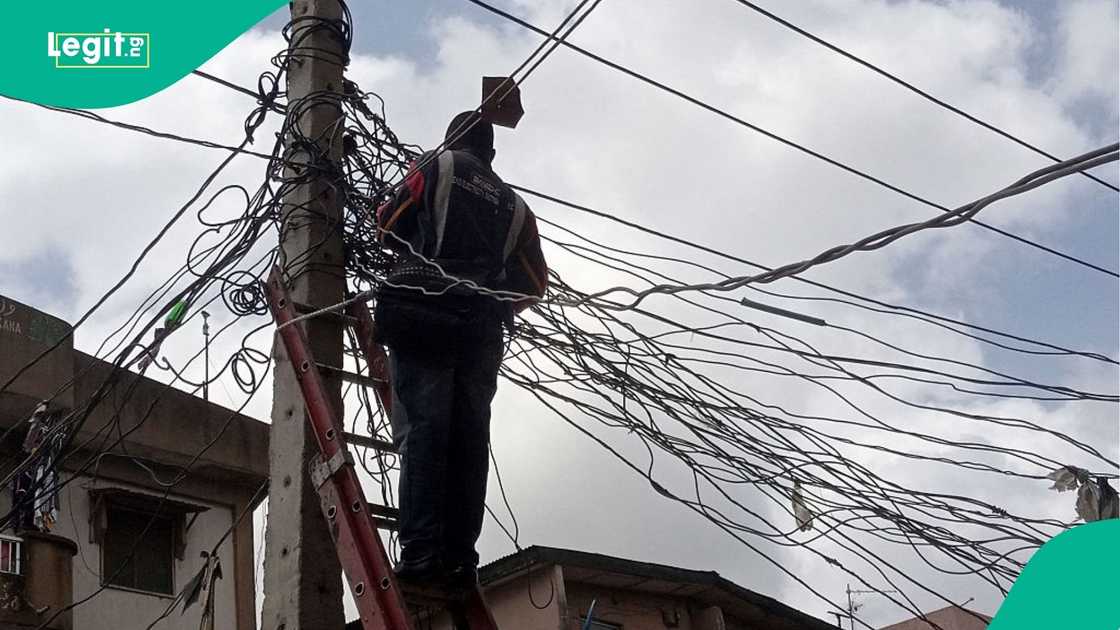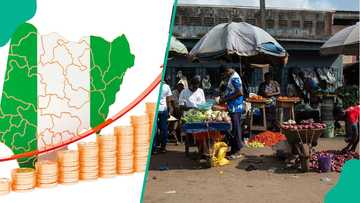Nigeria Produces Only 5,000MW Despite 13,000MW Capacity
- Despite Nigeria's capacity to produce massive megawatts of electricity, a huge amount remained idle in electricity generation companies
- 28 electricity power plants with a combined 13,625MW capacity are connected to the national grid, but they only produce an average of 5,395.72MW
- The Minister of Power explained that the disparity is due to inefficiency of transmission lines and distribution companies (DisCos)
Oluwatobi Odeyinka is a business editor at Legit.ng, covering energy, the money market, tech and macroeconomic trends in Nigeria
The 28 electricity power plants connected to the national grid with a combined 13,625MW capacity are only able to produce an average of 5,395.72MW per hour, data from the Nigerian Electricity Regulatory Commission (NERC) has revealed.
According to a report by Daily Trust, this disparity is due to inefficiency of transmission lines and distribution companies (DisCos).

Source: Getty Images
DisCos reportedly rejected an average of 191.49MW worth of electricity hourly in the first quarter of 2025 and 79.59MW in the second quarter. With a generating capacity of over 30,000MW, albeit still low for its 200 million population, only 3,781.94MW is consumed by Nigerians.
Power plants generate below their capacities
NERC’s data indicates that most power plants across the country are operating well below their installed capacities.
For example, the Egbin plant, Nigeria’s largest with a 1,320MW capacity, delivered an average of 607.83MW in Q1 2025 and slightly more at 709.26MW in Q2.
The Delta station, which has a 900MW capacity, generated 489.80MW in Q1 but declined to 440.83MW in Q2. Similarly, the 760MW Kainji plant produced 501.58MW in Q1 and 473.65MW in Q2.
Output from other plants also followed the same trend. Olorunsogo plant 2, with a 750MW capacity, generated just 37.43MW in Q1 and only rose to 46.95MW in Q2. Afam 1, which has 726MW installed, managed 73.48MW in Q1 and 59.92MW in Q2.
Sapele Steam plant 1, designed to produce 720MW, generated 39.61MW in Q1 and dropped to 31.26MW in Q2. Zungeru, with a 700MW capacity, recorded 345.70MW in Q1 and 453.19MW in Q2.
Afam unit 2, which can produce 650MW, generated 246.63MW in Q1 but fell to 223.79MW in Q2. Odukpani_1 (625MW capacity) recorded 346.87MW in Q1 and 223.22MW in Q2. The Shiroro plant, rated at 600MW, generated 332.86MW in Q1 and 346.11MW in Q2.
Jebba, with a 578MW capacity, produced 447.15MW in Q1 and 433.18MW in Q2. Ihovbor plant 1, with a 500MW installed capacity, delivered just 51.32MW in Q1 and 67.16MW in Q2. Omotosho plant 2, also with 500MW capacity, produced 60.85MW in Q1 and 59.89MW in Q2.
Alaoji, despite having a 500MW capacity, did not generate any power in the period under review. Sapele plant 2, also rated 500MW, managed 97.91MW in Q1 and 105.46MW in Q2. Okpai (480MW capacity) generated 282.72MW in Q1 and 250.42MW in Q2, while Ihovbor plant 2 (461MW) delivered 446.36MW in Q1 and 448.90MW in Q2.
Geregu plant 1, with a 435MW capacity, produced 138.03MW in Q1 and significantly increased to 288.66MW in Q2. Geregu plant 2, which has the same capacity, generated 227.29MW in Q1 and 220.77MW in Q2.
Omotosho plant 1 (335MW capacity) generated 166.05MW in Q1 and 145.33MW in Q2. Olorunsogo plant 1, also rated 335MW, produced 161.81MW in Q1 and 137.93MW in Q2. Ibom Power, which has 190MW installed, delivered 23.46MW in Q1 and 28.87MW in Q2, while Rivers plant generated 52.86MW in Q1 and 26.58MW in Q2 from its 180MW capacity.
Omoku plant, with a 150MW installed capacity, produced 38.85MW in Q1 and 21.48MW in Q2. Ikeja, rated at 110MW, generated 109.10MW in Q1 and 109.28MW in Q2.
Trans Amadi plant (100MW capacity) recorded 4.75MW in Q1 and 5.93MW in Q2. Igbafo plant, with a 45MW capacity, generated 20.23MW in Q1 and 20.22MW in Q2. Dadin-Kowa, which can produce 40MW, delivered 16.36MW in Q1 and 17.49MW in Q2.

Source: Getty Images
NERC states reasons for inefficiency
NERC explained that the shortfalls arise from factors such as fluctuations in plant output based on grid demand, mechanical operability of the units, and feedstock availability.
The commission added that plants are only dispatched when the grid can safely absorb the energy while operating within technical limits. According to NERC, dispatch decisions depend on mechanical and fuel availability, grid load offtake, and the financial competitiveness of each plant within the merit order system.
Power minister appeals to distribution companies to increase consumption of power so that generating companies can send more power to the grid.
The Minister of Power, Adebayo Adelabu, had previously urged state regulators and electricity distribution companies to work toward increasing consumption.

Read also
Nigeria’s FX inflows fall to $672m despite naira strengthening at both official and black markets
He said:
“In Nigeria, while we have not been able to take more than 5,000 megawatts, it is the demand that is required as we have the capacity. The evacuation grid can take 8,500 and is also increasing its capacity.”
He added that the demand must, however, be equal to the generation and equal to the consumption at any time. He appealed to electricity market regulators at the state level to ensure that distribution companies increase consumption.
Nigeria exports electricity to W/African countries
Legit.ng had reported the recent move by the Federal Government to further explore electricity sales to countries in the West African region.
The power minister had said the government is targeting about N1.49 trillion in annual revenue from electricity exports to 15 West African countries.
The country currently reportedly allocates 600MW for its bilateral power trade agreements with the countries each day.
Source: Legit.ng





